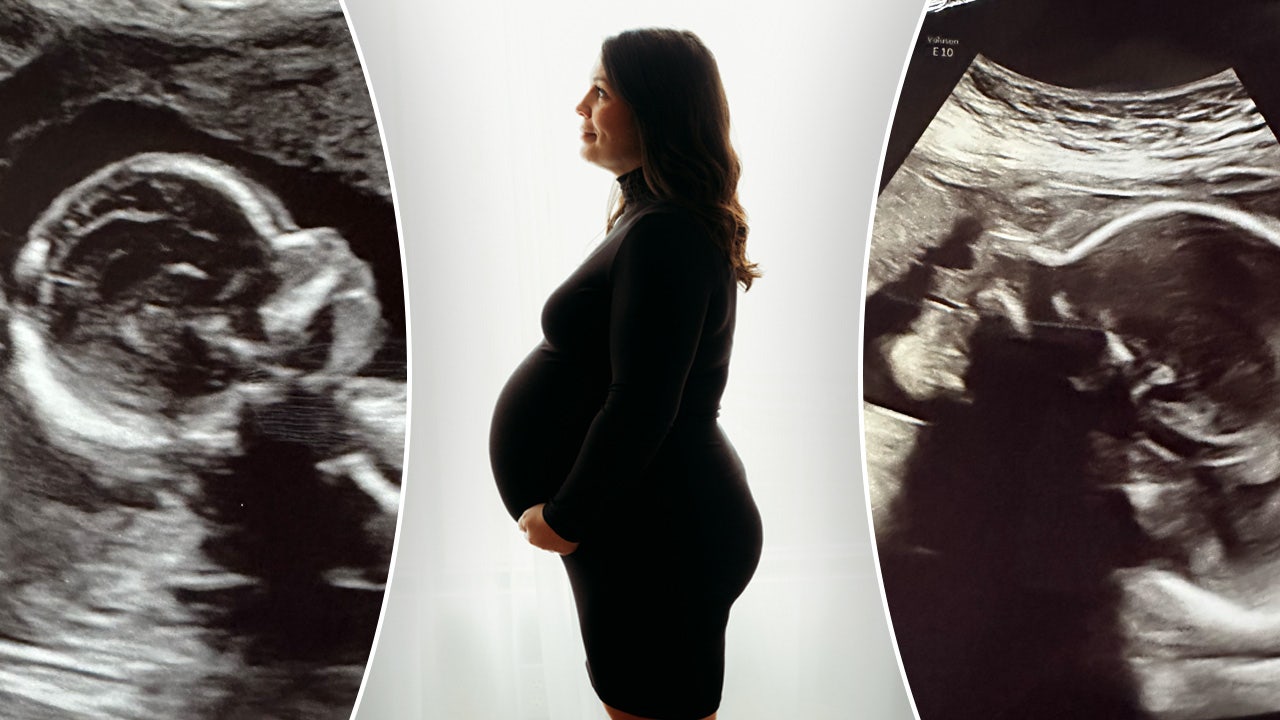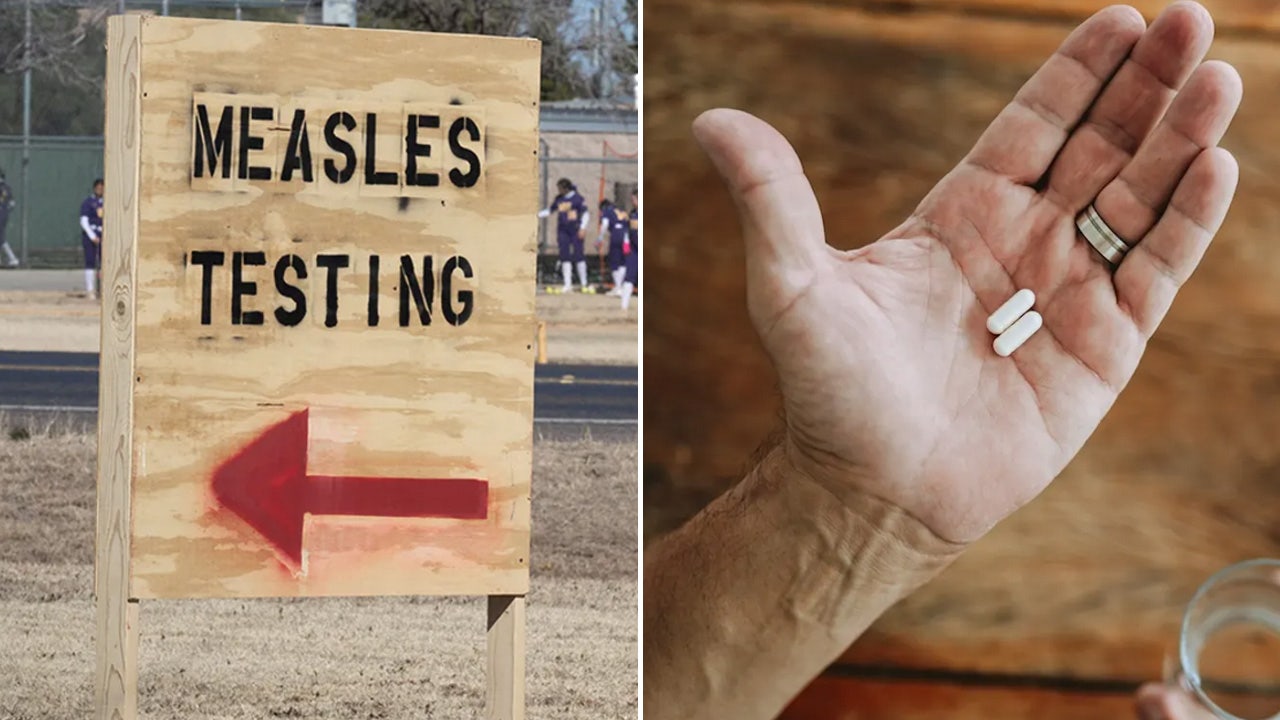Kelsey Hatcher was just 17 when she learned she had a double uterus.
Fifteen years later, the Alabama woman got a second shock: She’s pregnant with twins, one in each uterus.
Fox News Digital spoke to the 32-year-old mother and fitness coach — she already has three children — about her extremely rare pregnancy.
“I was having some minor complications that led us to set up an OB appointment, and upon examination and ultrasound, they discovered it,” she said.
Known as uterus didelphys, Hatcher’s condition affects only about 0.3% of the population, according to Cleveland Clinic.
Kelsey Hatcher, a 32-year-old mother and fitness coach in Alabama, spoke with Fox News Digital about her extremely rare pregnancy. (Caleb Shaver/Kelsey Hatcher)
“Essentially, the uteri are the size of one split in half.”
Hatcher had her first three children in “normal” pregnancies — Raelynn (6), River (4) and Rhemy (2).
PREGNANT WOMEN STRUGGLE TO FIND CARE IN ‘MATERNITY DESERTS,’ NEW STUDY FINDS: ‘WE NEED MORE SUPPORT’
For her next pregnancy, she was a little nervous going into the eight-week ultrasound.
“As the tech scanned and said everything looked great, I confirmed, ‘There is only one, right?’” Hatcher said.
“She smiled and said yes, so I took a breath and relaxed. But I then told her, ‘I’m not sure if it’s on my chart, but I do have a second uterus, just so you aren’t alarmed.'”

Hatcher and her husband, Caleb, have three children — Raelynn (6), River (4) and Rhemy (2). She is pregnant with two more babies, one in each uterus. (Caleb Shaver/Kelsey Hatcher)
The tech scanned over to find the other uterus.
“She didn’t even have a chance to speak before I blurted out, ‘Oh my goodness, there is another one!’” she recalled.
Hatcher was “in utter shock,” she said.
“I blurted out, ‘Oh my goodness, there is another one!’”
“All I could do was laugh,” she said. “I immediately called my husband, Caleb, to tell him, as he was not at the appointment with me. He and I just laughed together.”
Hatcher’s doctors were also in shock, she said, repeating how “rare and special” her case was.
The odds of any given woman having this type of pregnancy is about one in 50 million, as an OB/GYN at Baylor College of Medicine in Houston told Scientific American.

“I immediately called my husband, Caleb, to tell him, as he was not at the appointment with me,” Hatcher said of the day she found out about her rare pregnancy. “He and I just laughed together.” (Caleb Shaver/Kelsey Hatcher)
Shweta Patel, M.D., assistant professor at the University of Alabama at Birmingham’s Department of OBGYN, who is also Hatcher’s obstetrician, described the pregnancy as “very surprising.”
“It’s rare enough to have a uterine didelphys, more commonly known as a double uterus, but even more rare to have a pregnancy in each uterus,” she told Fox News Digital.
“I had to see the images of the ultrasound myself to believe it.”
Genetically, the babies — both girls — fit the definition of fraternal twins.
“We just have the added separation of different wombs,” Hatcher said.

Ultrasound photos show the twin girls, who are each in their own uterus. (Caleb Shaver/Kelsey Hatcher)
“Since the pregnancies are in separate uteri, we know that they occurred with two separate eggs and two separate sperm, meaning they will be fraternal twins,” Patel added.
“It is so rare to have a pregnancy in each uterus that I am not sure that we know to call it anything else but a twin pregnancy.”
Risks involved with rare pregnancy
The risks involved with Hatcher’s two pregnancies are the same as with a single pregnancy, she told Fox News Digital.
“There is always a risk of preterm labor, miscarriage or uterine rupture if the baby goes too long — but all of these things are a risk with any pregnancy,” she said.
So far in Hatcher’s pregnancy, her prenatal care hasn’t been any different — “mostly because I’ve had three successful deliveries previous to the twin pregnancy,” she noted.
Her third trimester has been “a little more invasive,” however, as it’s being co-managed by her regular obstetrician and the high-risk team.
“They are mostly just watching the girls more closely, to make sure they are growing properly and to discuss all our options for delivery,” Hatcher said.

Hatcher’s doctors are allowing her to carry longer than most twin moms, in hopes that her body will go into spontaneous labor — either in both uteruses or just one. (Caleb Shaver/Kelsey Hatcher)
Patel agreed, noting that the risks of having a twin pregnancy with one baby in each uterus are similar to having a twin pregnancy in one uterus — for example, giving birth prematurely, developing pre-eclampsia and bleeding after delivery.
“Kelsey has had routine prenatal care for the most part, especially in the beginning of the pregnancy,” Patel told Fox News Digital.
“She will need more frequent ultrasound and prenatal care visits in the third trimester to monitor the babies, especially their growth.”
“I have complete faith that this delivery will be great and will continue to beat the odds.”
The current plan is for Hatcher to have a natural, vaginal delivery.
“We believe that because my body has done this three times before, it should be able to deliver the twins in the same way,” she said.
“There are just so many factors that have to be considered.”

“I have complete faith that this delivery will be great and will continue to beat the odds,” Hatcher told Fox News Digital. (Caleb Shaver/Kelsey Hatcher)
Hatcher’s doctors are allowing her to carry longer than most twin moms, in hopes that her body will go into spontaneous labor — either in both uteruses or just one.
“They will allow me to deliver one completely if only one side goes into labor, as long as the other baby and I are well. Then they will start an induction for the second baby,” Hatcher said.
CLICK HERE TO GET THE FOX NEWS APP
If neither uterus goes into labor on its own, the plan is for Hatcher to be induced on Dec. 22.
A double Cesarean delivery is the last resort.
“The most unpredictable part is delivery,” Patel said. “Do we deliver vaginally? Do we deliver by C-section? Besides published case studies, there is limited guidance.”

Hatcher’s doctors have told her how “rare and special” her current pregnancy is. (Caleb Shaver/Kelsey Hatcher)
“Ultimately, with the help of our UAB maternal-fetal medicine colleagues and considering Kelsey’s wishes, we were able to make our recommendations.”
Added Patel, “It takes a team to take care of such a rare pregnancy, and I am grateful that Kelsey is at UAB, where we can provide that interdisciplinary care.”
“I’ve been extremely blessed and grateful,” Hatcher said of her experience.
CLICK HERE TO SIGN UP FOR OUR HEALTH NEWSLETTER
“I’ve carried all three of my previous babies to full term, two of the three even to 41 weeks,” she went on.
“I have complete faith that this delivery will be great and will continue to beat the odds.”
For more Health articles, visit www.foxnews.com/health.





